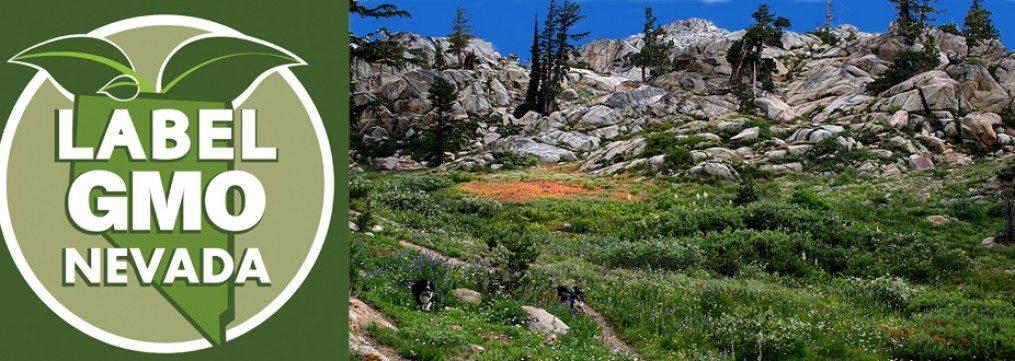Dispelling the Myth that GMOs Will Feed the World
–GMOs have been around for over two decades, even though world hunger has increased. Many experts assert that there is plenty of food available right now, but food access and poverty stand in the way as the real problems. Poor people in third world countries lack resources to acquire land and tools, and to learn truly sustainable farming practices. Large farmers in third world countries are the only ones who can afford to buy GENETICALLY ENGINEERED seed, along with all of the expensive inputs required to grown them. Much of the current GMO crop production goes to animal feed and fuel, neither of which can decrease hunger. Nor can bt cotton. http://www.organicvalley.coop/why-organic/research-library/gmos/the-false-promise-of-gmos/page-1/
–The Union of Concerned Scientists have analyzed over 20 years of corn and soybean productivity, with the conclusion that most of the increase in higher yields could come from conventional farming methods, not through GENETICALLY ENGINEERED agriculture. These would include “sustainable and organic farming, and other sophisticated farming practices that do not require farmers to pay significant upfront costs.” http://www.ucsusa.org/food_and_agriculture/our-failing-food-system/genetic-engineering/failure-to-yield.html

–GMO/chemical-based farming operations cost growers more and more each year, not something that will aid in solving world hunger. Promised to require fewer chemicals and inputs, genetically modified crops have actually required more and more expensive inputs, herbicides and pesticides. Charles Benbrook, researcher from Washington State University, reported in 2012, that in the 16 years prior to his study, herbicide use increased by 527 million pounds, due to the adaptation and proliferation of super weeds, over two dozen weed varieties which now require more glyphosate and other chemicals to control them. At the time of his study, pesticide use had actually decreased over the 16 year period, but appeared to be on the way up, as insects adapted as well. So farmers have had to pay more for their inputs, not less. http://news.cahnrs.wsu.edu/2012/10/01/pesticide-use-rises-as-herbicide-resistant-weeds-undermine-performance-of-major-ge-crops-new-wsu-study-shows/
–The phenomenon of seed ownership by biotech firms has also proven expensive for farmers, again, not something that will help world food access. Because growers cannot save seeds, a cornerstone of agrarian practices for thousands of years, farmers are now forced to purchase new patented seeds each year.
OTHER “COSTS” OF GMO CROPS

–Aside from human and animal health effects, and failure to solve world hunger, GENETICALLY ENGINEERED crops have had additional impacts. According to a August 2010 Scientific American article, because of the way canola pollinates, GENETICALLY ENGINEERED canola has proliferated into the wild, across Canada. Canola cross breeds with numerous wild plants, and has been found in the wild. Canadian canola has also traveled to the upper mid-western U.S. http://www.scientificamerican.com/article.cfm?id=genetically-modified-crop A 2007 Green Peace study report produced for Australian farmers considering GENETICALLY ENGINEERED canola, concludes that segregation of GENETICALLY ENGINEERED canola is impossible, inevitably affecting the Canadian canola export market adversely. http://gefreebc.files.wordpress.com/2011/01/ge-canola-out-of-control-in.pdf
–GENETICALLY ENGINEERED corn has infiltrated traditional varieties in Mexico, threatening Latin corn heritage. The Starlink Gmo variety has been found in the wild in Mexico, as well in cultivated areas. http://www.corpwatch.org/article.php?id=2088

–In July, 2013 a story broke about unapproved GENETICALLY ENGINEERED wheat having been found on an Oregon Farm. Fourteen years prior, Monsanto had grown the same strain in Northwest test plots, then abandoned the project and, according to them, had destroyed the seeds. Immediately Japan and Korea halted imports of the wheat, while a USDA investigation began. While no more wheat has yet been discovered, and exports have resumed, the threat of cross contamination, of all kinds, threatens exporters and organic growers alike.
PESTICIDE/HERBICIDE EXPOSURE AND THE COST TO AGRICULTURAL WORKERS
Because of our current system of agriculture, more toxic chemicals are used each year, and farm workers are exposed to more dangerous chemicals than any other sector of society. Laws do not protect workers from pesticide exposure. Non-documented workers are not likely to report instances of chemical toxicity. Language barriers represent an additional obstacle for reporting. Workers are exposed to chemicals in many ways, throughout the agricultural process, including planting, weeding, pruning, harvesting and processing, not to mention the preparation and application of chemicals to the crops. Even living near a farm exposes workers and their families to toxic chemicals, through drift into nearby homes and schools, and more directly from touching the worker’s hair and clothing.

The EPA has estimated that many thousands of farmworkers suffer from exposure to toxic chemicals each year. These numbers are difficult to validate, as many states do not have adequate reporting systems for chemical illness or injury. Language barriers represent an additional obstacle. Farm workers do not receive adequate training for handling chemicals. Many workers are treated when they return to their native country, or are misdiagnosed in the first place. Most exposure comes through the skin. Pesticide/herbicide exposure can be related to numerous diseases and conditions, such as many kinds of cancer, neurological disorders, and infertility, in both men and women, and birth defects in their children.
See http://www.panna.org/issues/frontline-communities/farmworkers and
http://afop.org/health-safety/ and
http://farmworkerjustice.org/press/new-farmworker-justice-report-profiles-dangers-pesticide-poisoning-offers-recommendations-epa
